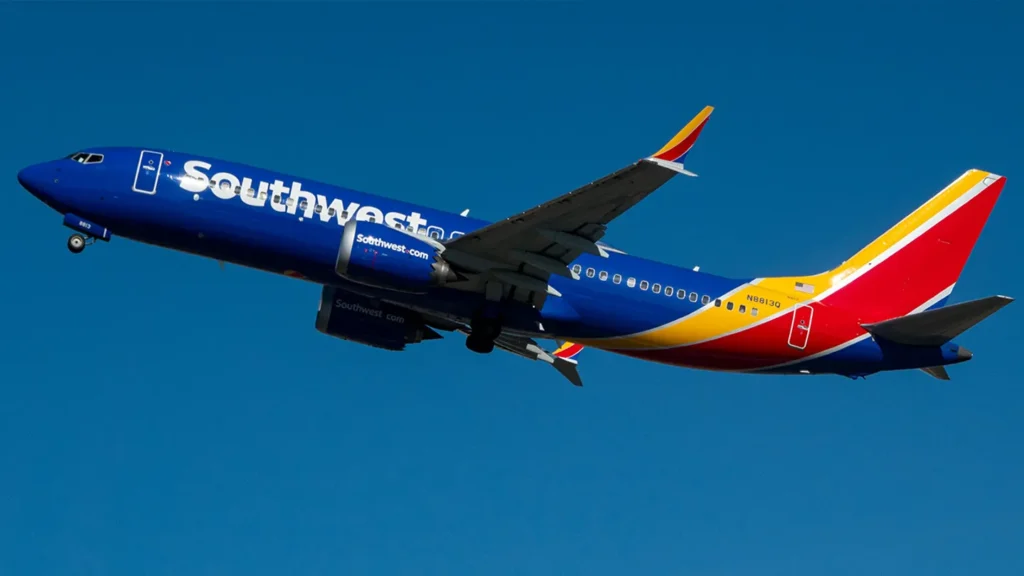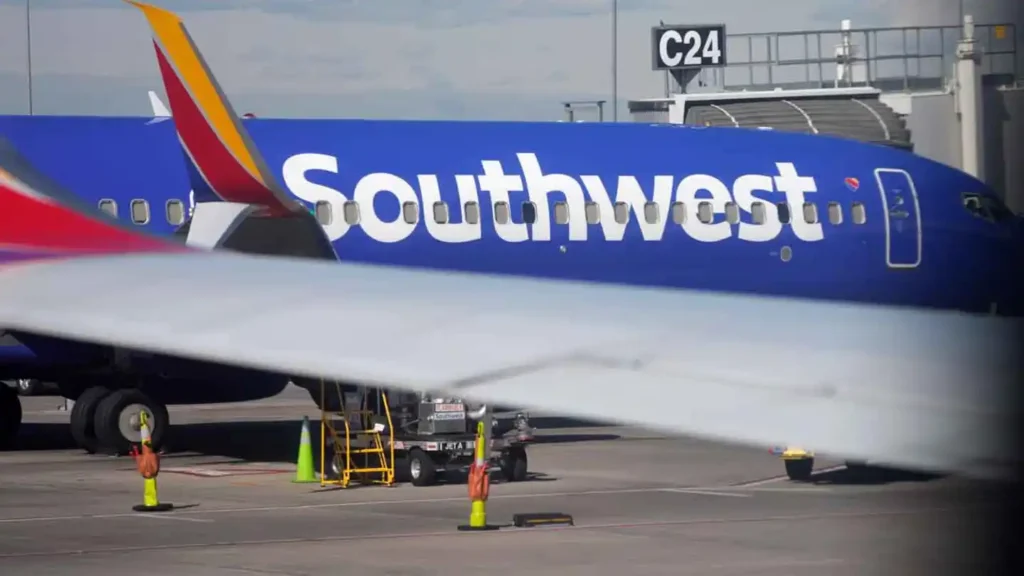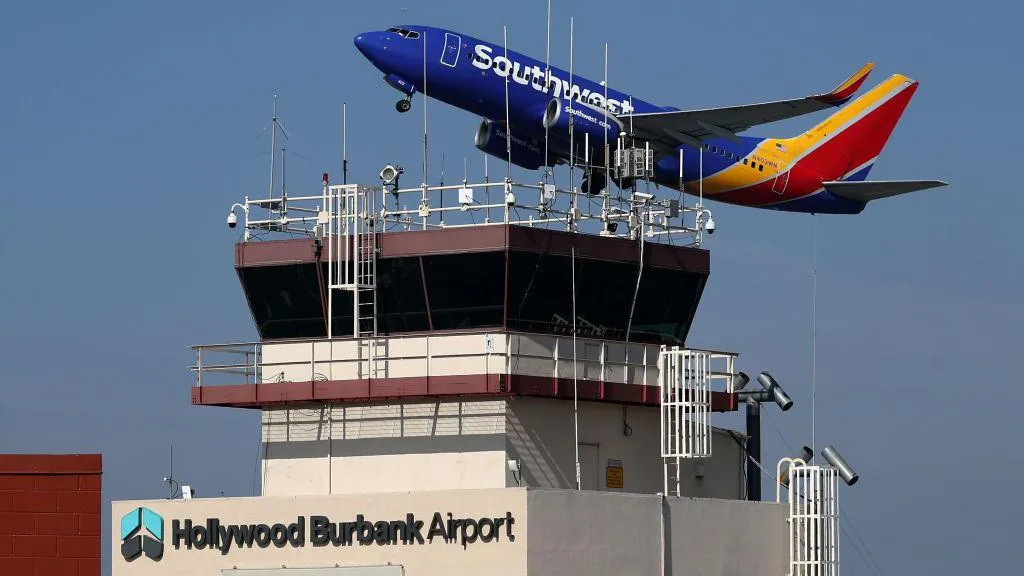Southwest Airlines flight 1496 forced into an abrupt nosedive shortly after takeoff to avoid a mid‑air collision — and terrified passengers “flew out of their seats” as the jet sharply descended. This harrowing event, captured across multiple major news outlets, set off a full Federal Aviation Administration investigation. Drawing on eyewitness reports, flight data, and industry context, here’s a comprehensive and human‑written account that provides more detail, clarity, and depth than existing coverage.

Southwest Airlines: Alert triggers emergency maneuver
Just six minutes after departing Hollywood Burbank Airport en route to Las Vegas on July 25, 2025, the Boeing 737 climbed to about 14,100 feet before triggering two onboard collision alerts, initiating emergency responses from the flight crew. Pilots first climbed, then executed a steep descent, dropping the aircraft roughly 400–500 feet in under 35 seconds to avoid another aircraft overhead.

The other aircraft involved appeared to be a Hawker Hunter military jet, registration N335AX, flying roughly 400 feet above the Southwest jet at about four miles distance — likely operating under a defense contractor rather than active military command.
Southwest Airlines: Chaos inside the cabin
Passengers described scenes of chaos and panic: individuals unbuckled in aisle seats felt themselves launched upward, slamming into the ceiling, while frightened children cried and adults screamed. Stand‑up comedian and passenger Jimmy Dore shared on X that “plenty of people flew out of their seats & bumped heads on the ceiling”, and noted that a flight attendant required medical attention.

Another passenger likened the experience to the “Tower of Terror”, saying the plunge was akin to falling 20–30 feet within two seconds — the kind of sudden drop you’d expect only at an extreme theme‑park ride. According to the Associated Press, the descent lasted about 36 seconds—enough to spark widespread alarm onboard. AP News
Flight crew response and landing
Despite the mid‑air scare, the pilots navigated the crisis expertly. After the descent, they regained control, stabilized the aircraft, and landed safely in Las Vegas. Southwest Airlines credited the crew’s training and composure under pressure, emphasizing that customer and employee safety remains its highest priority.

Only two flight attendants sustained injuries—minor head trauma—and no passengers were reported injured. Medical staff were standing by on arrival. Flight tracking data confirms the jet climbed back smoothly and continued its journey without additional incidents.
FAA investigation and aviation safety context
The FAA confirmed it is investigating the incident. Aviation officials emphasized that while the aircraft was in LA’s Air Route Traffic Control Center airspace, Hollywood Burbank tower recorded no direct visibility of the descent, underscoring potential gaps in data sharing or coordination.
This event adds to a pattern of recent near‑misses in U.S. skies, including close calls with military jets — notably a Delta flight nearly colliding with a B-52 over North Dakota, and a tragic January incident near Washington, D.C. that killed 67 people. The Washington Post
Eyewitness perspectives
Jimmy Dore, aboard the flight, posted:
“Myself & plenty of people flew out of their seats & bumped heads on ceiling, a flight attendant needed medical attention… Pilot said his collision warning went off & he needed to avoid the plane coming at us.”
Caitlin Burdi, another passenger, described:
“About 10 minutes into the flight… within two seconds, it felt like the ride Tower of Terror… we fell 20–30 feet in the air… truly terrifying.” Fox News
The widespread emotional distress prompted applause once the jet touched down in Las Vegas — a collective release of tension after the ordeal. The Financial Express
Why this incident matters
- Air traffic coordination gaps: If a military‑style jet operating under contractor status can enter commercial flight paths unnoticed, protocols may need tightening.
- Human factors in airline safety: Speed and precision by pilots and crew prevented disaster—but the chaotic cabin aftermath reveals how critical seatbelt adherence is.
- Regulatory spotlight: With the FAA already auditing Southwest after safety lapses, including recent Dutch roll and altitude incidents, this episode may strengthen arguments for stricter compliance measures. New York Post
Conclusion
Southwest flight 1496’s sudden nosedive to avoid a mid‑air collision represents both a near‑disaster and a lesson in professionalism under pressure. Despite passengers flying out of their seats and a cabin full of fear, the skilled flight crew avoided catastrophe. The ongoing FAA review and broader cases of near-misses underscore urgent questions about airspace coordination, especially with contractor‑operated jets.
No passengers harmed, two flight attendants treated, and a flight that ended safely amid chaos. This incident reaffirms why aviation systems must constantly evolve. For continuous reporting and expert coverage of aviation and U.S. news, subscribe to trusted news sites like USnewsSphere.com for continuous updates.





